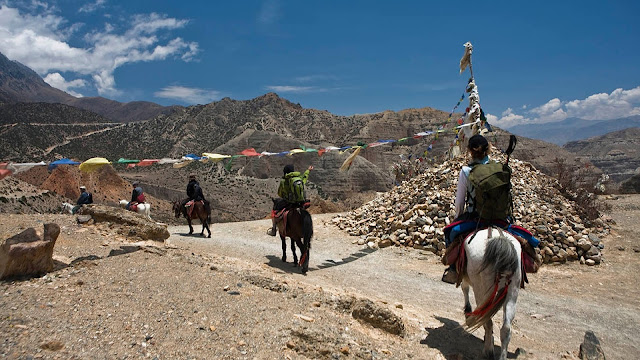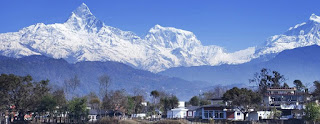Lumbini
the Birthplace of the Lord Buddha
Siddhartha
Gautam the lord Buddha was born in 623 B.C. in famous gardens of Lumbini which
soon became a place of pilgrimage. Among the pilgrims was the Indian emperor Ashoka,
who erected one of his commemorative pillars there. The site is now being
developed as a Buddhist pilgrimage Centre, where the archaeological remains
associated with the birth of the lord buddha form a central feature.
Brief synthesis
The Lord Buddha was born
in 623 BC in the sacred area of Lumbini located in the Tarai plains of southern
Nepal, testified by the inscription on the pillar erected by the Mauryan
Emperor Asoka in 249 BC. Lumbini is one of the holiest places of one of the world's
great religions, and its remains contain important evidence about the nature of
Buddhist pilgrimage Centre’s from as early as the 3rd century BC.
The complex of structures within the archaeological conservation area
includes the Shakya Tank; the remains within the Maya Devi Temple consisting of
brick structures in a cross-wall system dating from the 3rd century BC to the
present century and the sandstone Ashoka pillar with its Pali inscription in
Brahmi script. Additionally, there are the excavated remains of Buddhist
viharas (monasteries) of the 3rd century BC to the 5th century AD and the
remains of Buddhist stupas (memorial shrines) from the 3rd century BC to the
15th century AD. The site is now being developed as a Buddhist pilgrimage Centre,
where the archaeological remains associated with the birth of the Lord Buddha
form a central feature.
Criterion (iii): As the birthplace of the Lord Buddha,
testified by the inscription on the Asoka pillar, the sacred area in Lumbini is
one of the most holy and significant places for one of the world’s great
religions.
Criterion (vi): The archaeological
remains of the Buddhist viharas (monasteries) and stupas (memorial shrines)
from the 3rd century BC to the 15th century AD, provide important evidence
about the nature of Buddhist pilgrimage Centre’s from a very early period.
Integrity
The integrity of Lumbini has
been achieved by means of preserving the archaeological remains within the
property boundary that give the property its Outstanding Universal Value. The
significant attributes and elements of the property have been preserved. The
buffer zone gives the property a further layer of protection. Further
excavations of potential archaeological sites and appropriate protection of the
archaeological remains are a high priority for the integrity of the property.
The property boundary however does not include the entire archaeological site
and various parts are found in the buffer zone. The entire property including
the buffer zone is owned by the Government of Nepal and is being managed by the
Lumbini Development Trust and therefore there is little threat of development
or neglect. However, the effects of industrial development in the region have
been identified as a threat to the integrity of the property.
Authenticity
The authenticity of the archaeological remains within the boundaries has been confirmed through a series of excavations since the discovery of the Asoka pillar in 1896. The remains of viharas, stupas and numerous layers of brick structures from the 3rd century BC to the present century at the site of the Maya Devi Temple are proof of Lumbini having been a Centre of pilgrimage from early times. The archaeological remains require active conservation and monitoring to ensure that the impact of natural degradation, influence of humidity and the impact of the visitors are kept under control. The property continues to express its Outstanding Universal Value through its archaeological remains. The delicate balance must be maintained between conserving the archaeological vestiges of the property while providing for the pilgrims.
Protection and
management requirements
The property site is protected by the Ancient Monument Preservation Act 1956. The site management is carried out by the Lumbini Development Trust, an autonomous and non-profit making organization. The entire property is owned by the Government of Nepal. The property falls within the Centre of the Master Plan area, the planning of which was initiated together with the United Nations and carried out by Prof. Kenzo Tange between 1972 and 1978.
 The long-term challenges for the protection and management of the property
are to control the impact of visitors, and natural impacts including humidity
and the industrial development in the region. A Management Plan is in the
process of being developed to ensure the long-term safeguarding of the
archaeological vestiges of the property while allowing for the property to
continue being visited by pilgrims and tourists from around the world.
The long-term challenges for the protection and management of the property
are to control the impact of visitors, and natural impacts including humidity
and the industrial development in the region. A Management Plan is in the
process of being developed to ensure the long-term safeguarding of the
archaeological vestiges of the property while allowing for the property to
continue being visited by pilgrims and tourists from around the world.





































